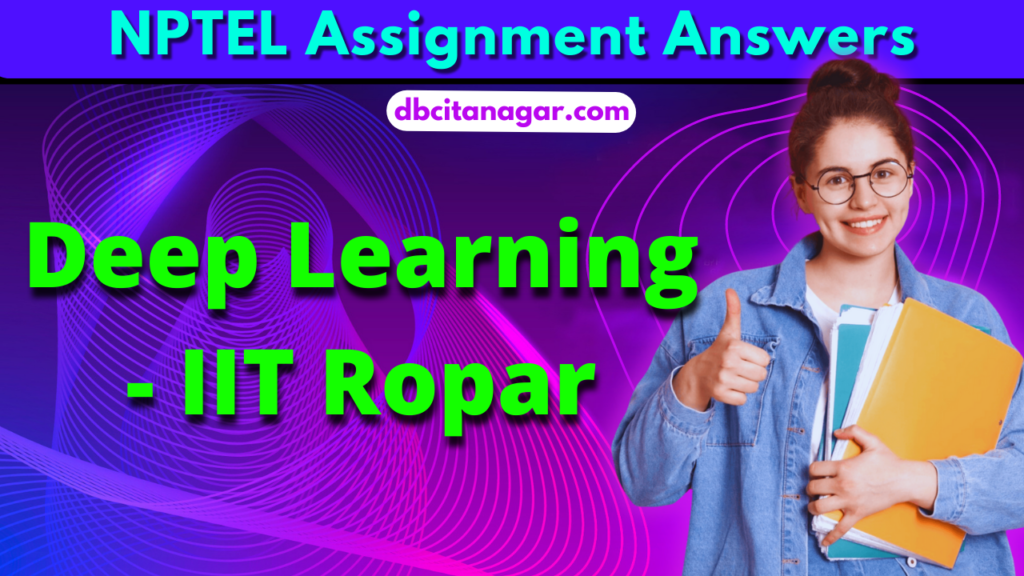NPTEL Deep Learning – IIT Ropar Week 6 Assignment Solutions

NPTEL Deep Learning – IIT Ropar Week 6 Assignment Answer 2023
1. What is the main purpose of a hidden layer in an under-complete autoencoder?
- To increase the number of neurons in the network
- To reduce the number of neurons in the network
- To limit the capacity of the network
- None of These
Answer :-For Answer Click Here
2. Which of the following problems prevents us from using autoencoders for the task of Image compression?
- Images are not allowed as input to autoencoders
- Difficulty in training deep neural networks
- Loss of image quality due to compression
- Auto encoders are not capable of producing image output
Answer :- For Answer Click Here
3. Which of the following is a potential advantage of using an overcomplete autoencoder?
- Reduction of the risk of overfitting
- Ability to learn more complex and nonlinear representations
- Faster training time
- To compress the input data
Answer :- For Answer Click Here
4. What is/are the primary advantages of Autoencoders over PCA?
- Autoencoders are less prone to overfitting than PCA.
- Autoencoders are faster and more efficient than PCA.
- Autoencoders require fewer input data than PCA.
- Autoencoders can capture nonlinear relationships in the input data.
Answer :- For Answer Click Here
5. Which of the following is a potential disadvantage of using autoencoders for dimensionality reduction over PCA?
- Autoencoders are computationally expensive and may require more training data than PCA.
- Autoencoders are bad at capturing complex relationships in data
- Autoencoders may overfit the training data and generalize poorly to new data.
- Autoencoders are unable to handle linear relationships between data.
Answer :- For Answer Click Here
6. What is the primary objective of sparse autoencoders that distinguishes it from vanilla autoencoder?
- They learn a low-dimensional representation of the input data
- They minimize the reconstruction error between the input and the output
- They capture only the important variations/features in the data
- They maximize the mutual information between the input and the output
Answer :- For Answer Click Here
7. Which of the following networks represents an autoencoder?


For Answer Click Here
8. If the dimension of the hidden layer representation is more than the dimension of the input layer, then what kind of autoencoder do we have?
- Complete autoencoder
- Under-complete autoencoder
- Overcomplete autoencoder
- Sparse autoencoder
Answer :- For Answer Click Here
9. Suppose for one data point we have features x1,x2,x3,x4,x5 as −2,12,4.2,7.6,0 then, which of the following function should we use on the output layer(decoder)?
- Logistic
- Relu
- Tanh
- Linear
Answer :- For Answer Click Here
10. If the dimension of the input layer in an under-complete autoencoder is 6, what is the possible dimension of the hidden layer?
- 6
- 2
- 8
- 0
Answer :- For Answer Click Here
| Course Name | Deep Learning – IIT Ropar |
| Category | NPTEL Assignment Answer |
| Home | Click Here |
| Join Us on Telegram | Click Here |






